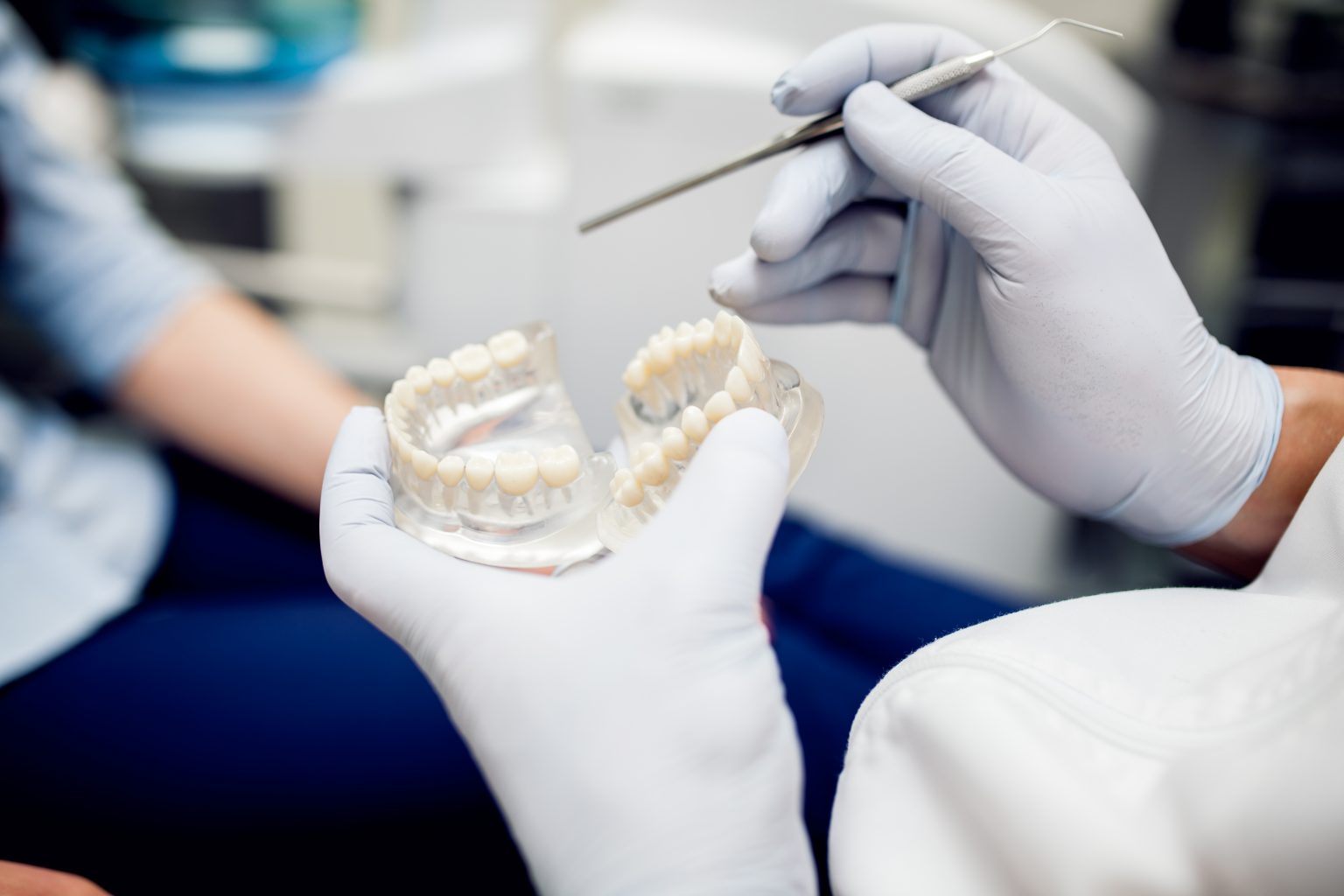1. What are molar dental bridges?
Fixed dental restorations called dental bridges are used to replace lost molar teeth. They are made up of one or more prosthetic teeth (pontics) fixed to dental implants or neighboring teeth. These bridges aid in the restoration of chewing ability, preservation of neighboring teeth’s alignment, and avoidance of bite problems brought on by missing molars.
2. What is the significance of dental bridges for molars?
The main teeth used for grinding and chewing food are called molars. A missing molar can have an impact on the alignment and function of neighboring teeth, causing shifting of teeth, trouble with bite, and even pain in the jaw. Molar dental bridges assist close the space created by lost teeth, restoring
3. What varieties of dental bridges are there?
Dental bridges come in a variety of forms, each intended to treat a particular dental condition:
Conventional bridges: The most prevalent kind, these bridges have a pontic in the center and two crowns on either side of the opening. They are fixed to the teeth next to them.
Cantilever bridges: Usually used in locations with low chewing force, these bridges are used when just one natural tooth remains to support them.
Maryland bridges: These bridges eliminate the necessity for crowns by using a metal or porcelain framework affixed to the rear of the neighboring teeth.
Bridges supported by dental implants: These bridges are more solid and long-lasting since they are supported by the implants rather than by neighboring teeth.
4. For molars, what kind of dental bridge is ideal?
Because of the strength and durability required for chewing, the traditional bridge or implant-supported bridge is frequently advised for molars. For molars, implant-supported bridges are especially advantageous because they are more stable and put less pressure on neighboring teeth.
5. How are crowns positioned?
Preparing the neighboring teeth (or implants) for the bridge is part of the process. In the case of conventional bridges, this entails preparing the neighboring teeth to accommodate crowns. A unique bridge is made using impressions, and it is subsequently cemented into position. For bridges supported by implants, implant implantation must be done separately from bridge installation.
6. What is the lifespan of dental bridges for molars?
Dental bridges can endure for up to 15 years or more with the right maintenance. Because implant-supported bridges do not rely on neighboring teeth for support, they may survive longer than traditional bridges.
7. Can several lost teeth be restored using dental bridges?
Yes, depending on the state of the neighboring teeth or implants, dental bridges can replace numerous missing molars. While traditional bridges might be effective for smaller gaps with healthy neighboring teeth, implant-supported bridges are typically utilized for bigger gaps.
8. How much do molar dental bridges cost?
The kind of bridge, the quantity of lost teeth, and the materials utilized all affect the price. Implant-supported bridges can be more costly, typically costing between $5,000 and $15,000, than traditional bridges, which can cost between $2,000 and $5,000.
9. How are dental bridges maintained?
Daily brushing and flossing is required for proper maintenance in order to stop gum disease and decay along the bridge. To keep an eye on the health of the surrounding teeth or implants as well as the state of the bridge, routine dental examinations are important.
10. Can bridges in the mouth be replaced?
Yes, wear and tear, damage, and gum recession can eventually require replacing dental bridges. They can survive for many years before needing to be replaced with proper maintenance.
In conclusion:
Dental bridges are a great way to replace lost molars and help restore both appearance and function. Whether you go for a regular bridge, an implant-supported bridge, or something else entirely, the best bridge type for you will depend on your unique dental needs. You can maintain complete dental function for many years with a bridge that lasts a long time with proper maintenance and routine dental checkups.

